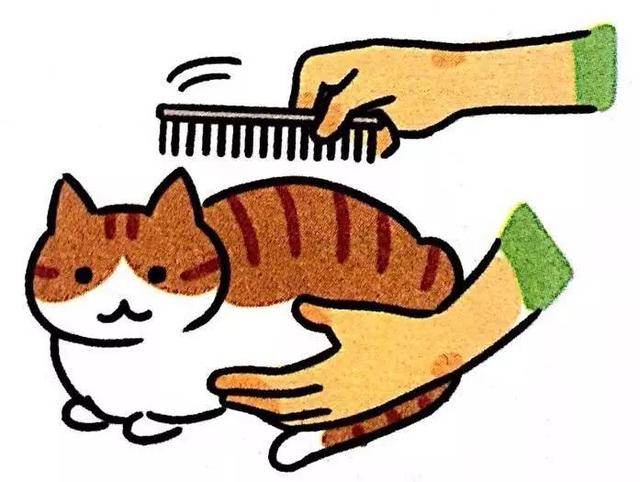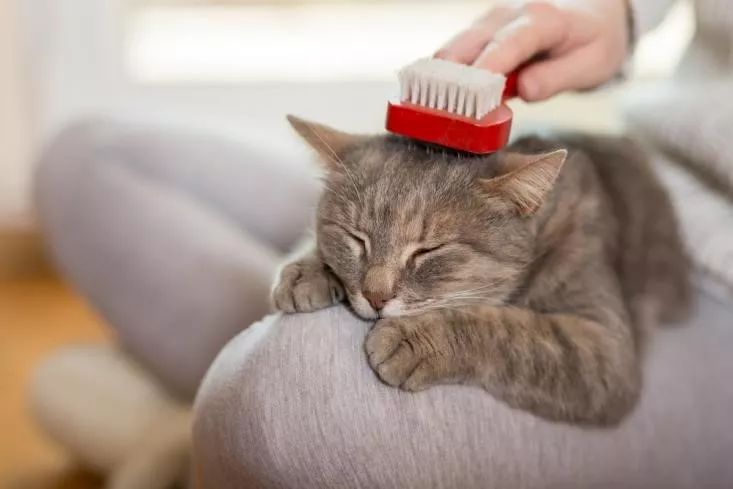How to groom a kitten?
Although your cat is beautiful, they are so much more than a pretty face. Not only do they have a stunning coat, but they’re biologically designed to look after them.
Their rough tongues act like mini brushes, removing dead hair and distributing oils through their coat. They’re also smart enough to know that when these biological grooming aids are not enough – for example, if they get fur-balls or tangles – you can be counted on to help.
Kitten grooming
Kitten grooming isn’t just about making your feline look fancy – it removes dead hair, keeps their coat and skin healthy, helps you build an intimate bond, and gives you the opportunity to check their overall health.
Grooming is an important part of looking after kittens, but thanks to their softer, fluffier and shorter coats, it should take next to no time to do, compared to adults. If you can get your kitten used to regular grooming from a young age, it will make life much easier for both of you in the future. The good news is that most cats love the gentle attention of being groomed, and as soon as they see a brush or comb in your hand, they’ll usually come running for the fuss.
Brushing your kitten
Long vs. short coats
How thoroughly and how often you’ll end up brushing your kitten usually depends on their type of coat. A short-coated cat will usually only need a quick ‘once-over’ weekly while a long-coated breed will need daily attention with the right type of equipment – ask your breeder or a groomer for advice on specific coat types.
long haired kitten being brushed
Longhaired breeds need more cat care, and their grooming will take longer so you may want to groom your cat on a non-slip surface on a table – this will keep both of you as comfortable as possible during the process.
When they’re still a kitten, try to encourage them to enjoy the grooming experience. Take them to the table where you will want to groom them as adults and give them lots of praise and one or two treats. They will soon associate this spot with being groomed and rewarded.
How to brush your kitten
Pop your kitten onto your lap and offer them the brush to sniff. Once they know it’s safe, many cats will rub their faces on it.
Start brushing gently. Begin with their back and then move on to the sides of their body.
Give your cat plenty of praise for being good and speak in a quiet, soothing tone of voice.
kitten having hair brushed
Every few minutes, swap brushing for stroking them instead, as part of their pampering routine. You can offer them a treat as an extra reward.
Repeat this several times a day, gradually increasing the length of brushing time.
When your cat is familiar and comfortable with the sensation of being groomed you can start to brush their belly, tail, ears and other sensitive areas.
Be extra gentle and keep the initial cat care sessions very short. There’s no rush, and the most important thing is that they feel relaxed. If you notice any signs of boredom or agitation move away from the more sensitive areas and go back to grooming their back.
While your cat is relaxed and enjoying the experience, use this time to give them a quick health check. A few things you can try as part of an “at-home” check-up are:
Touch their paws and gently examine their claws and toes. Start with just one claw at first to get them used to the experience, and give them plenty of praise and even a treat as a reward. Over the next few grooming sessions you can try looking at two claws and so on, slowly building up your pet pedicure skills until they are completely at ease.
If your pet’s still happily purring away at the end of a grooming session, take a moment to carefully look inside their ears and gently open their mouth to check their teeth and gums.
Always end a kitten grooming session with a good fuss and a stroke – after all, they’ve deserved it!
Trimming your kitten’s claws
When your cat climbs a tree or uses their scratching post, they may pull off the outer layer of one of their claws, but don’t worry – this is normal! Scratching is a normal part of being a cat, and their claws are layered, so if the outer layer goes, there’ll be a brand new, sharp claw underneath (you’ll sometimes find outer husks near their favourite scratching areas).
Post time: Mar-26-2024


